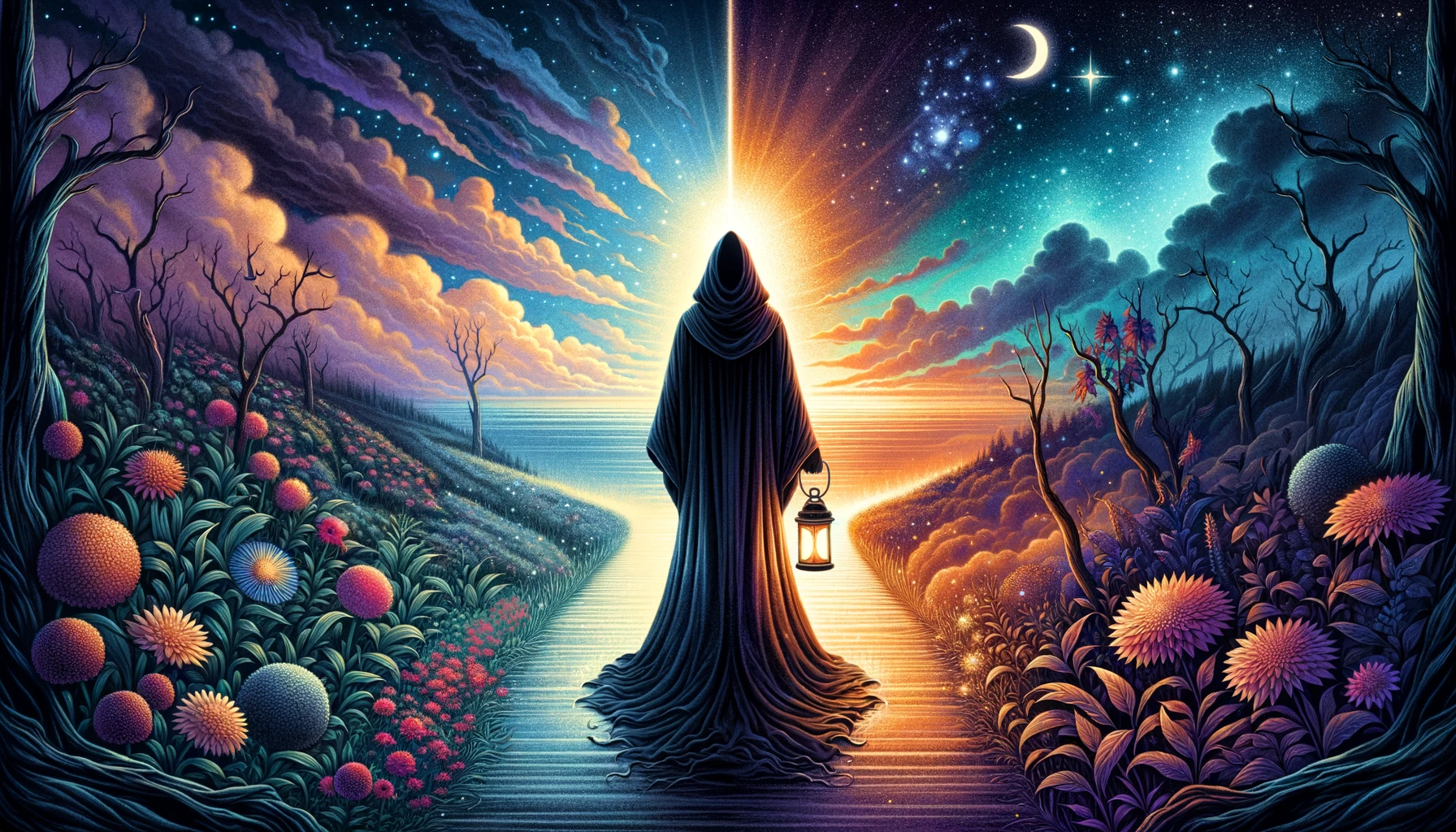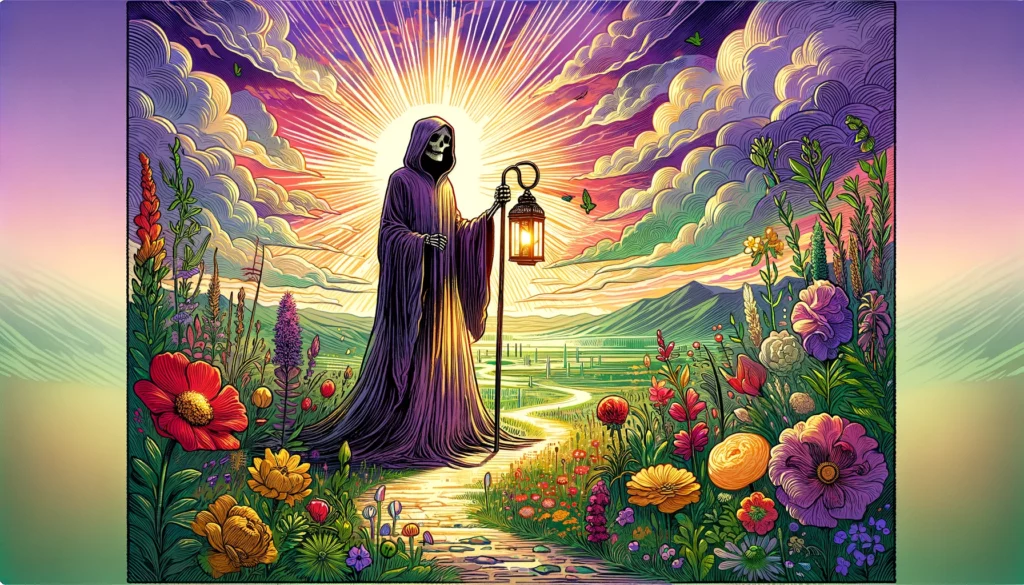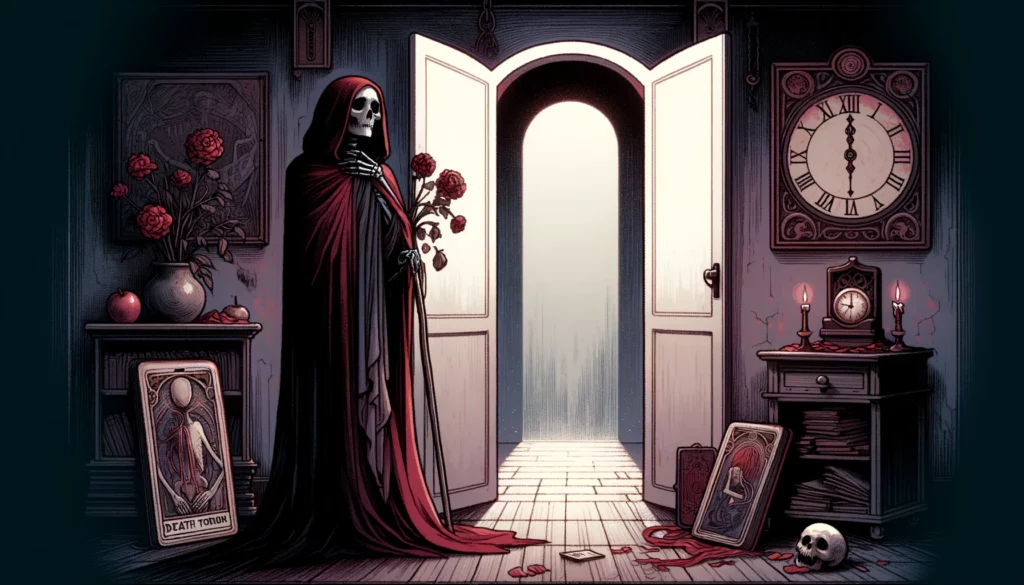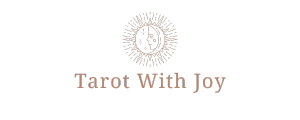Death as Person Tarot Card Meaning

When you’re delving into tarot, the Death card can often cause a stir of emotions. It’s a symbol that’s shrouded in mystery and often misunderstood. But what if you could see Death not as an end, but as a personified transformation within your life?
Unravelling the true meaning behind the Death card will shed light on its powerful message. It’s not about literal death, but about the metaphorical endings that pave the way for new beginnings. Stay tuned as we explore how this enigmatic card can signify change, rebirth, and personal evolution in your tarot readings.
Upright Death as a Person
In the realm of tarot, the upright Death card when representing a person often signifies an individual who is a catalyst for transformation. This person might be someone entering your life to help you close one chapter and begin another, boldly guiding you through transitions that, while challenging, are necessary for your growth.
They’re typically characterized not by a morbid sense of end, but rather a vibrant energy that pushes for progress and renewal. When you encounter someone embodied by the upright Death card, you’re meeting a person who is unafraid of change and often drives it. This individual may be a leader in their field, someone whose influence is profound and lasting.
- Embraces significant life changes
- Acts as an agent for others’ transformation
- Often appears during major turning points

Acknowledging the role of such a person in your life can provide clarity during times of uncertainty. They are often a bridge to your new self, the one you’ll become after outworn beliefs and situations fall away.
The upright Death as a person could also represent your own energy at a given time. If you’re going through a period of self-reinvention, it’s likely you’re resonating with the transformative power of this card. You may find yourself shedding old habits and seeking experiences that align with your evolutionary journey. This process is often marked by a series of “little deaths”—moments of letting go that cumulatively lead to a significant change in who you are.
Understanding the Death card in this way allows you to recognize transformation as an integral part of human experience. When viewed through a lens of personal growth rather than physical cessation, its presence in a reading can be a powerful indicator of your readiness to tackle the next phase of your life’s journey.
Death as Person Physical Characteristics
In the realm of tarot, physical characteristics are often conveyed symbolically rather than literally. When the Death card surfaces to represent a person, you’re not necessarily looking for someone with a dark, grim reaper-like appearance. Instead, it’s essential to focus on the energy they embody, which can hint at their physical presence in your life.
These individuals might carry themselves with an air of mystery, often leaving a lasting impression. They could have distinctive features that make them stand out in a crowd, perhaps a piercing gaze that seems to look through the façades and perceive the core of a situation. Their appearance could be transformative over time, reflecting the dynamic changes they embrace in their lives.
Rather than spotting them based on visual traits, you’ll recognize them by the transformative influence they have on your environment. Their aura is palpable, you might notice that they enter a room and the dynamics shift, conversations change course, or the energy levels fluctuate. They are noticeable even if they’re not trying to be the center of attention.
These individuals might also express their comfort with change through their fashion choices, opting for styles that are fluid, often changing their look to match their evolving perspective. It’s not uncommon for them to be drawn towards symbols of metamorphosis, like butterflies or phoenix imagery, in their clothing or accessories.
Observing how they interact with their surroundings can provide clues to their character. They may be passionately involved in activities that require an acceptance of the ephemeral nature of life or an acknowledgement of the cycles of ending and beginning. This could range from working in professions that deal with life transitions to engaging in artistic endeavors that explore themes of mortality and renewal.
Remember, when identifying a person as the embodiment of the Death tarot card, it’s more about sensing the intangible qualities they bring to your life and less about pinpointing specific physical traits. Keep an eye out for those who don’t shy away from the topics of transformation and reinvention, as they’ll likely be keen companions during periods of personal change.
Death as a Person Emotional Characteristics
When you’re dealing with someone who embodies the Death tarot card, emotional depth is a defining trait. These individuals often have an intrinsic understanding of life’s cyclical nature and thus approach their emotions with an intensity that can be both inspiring and intimidating. You’ll find that they aren’t afraid to explore the darker recesses of human feeling, embracing both joy and sorrow with open arms.
Transformation enthusiasts, they can serve as catalysts for emotional growth. Be prepared for their tendency to challenge your limiting beliefs or push you out of your comfort zone. It’s through this discomfort that personal development is often spurred.
Those who are reflections of the Death card may not always be easy to read. Their emotional state might appear enigmatic, as they’re skilled in keeping their true feelings under wraps. Their calm demeanor in the face of upheaval often makes others around them seek their guidance or view them as a rock amidst the storm.
They’re drawn to situations that require an emotional reset. Your encounters with them might occur at pivotal moments in your life, where you’re on the brink of substantial emotional shifts. Trust that their presence often signals an impending transformation—whether or not it’s immediately apparent.
Remember, individuals connected to the Death tarot card in this way are not harbingers of despair but are instead harbingers of change. It’s through their influence that you may find yourself shedding old emotional baggage and emerging renewed. Their companionship prompts soul-searching and discovery, leading you to reassess what you hold dear and what requires release.
As relationships with such individuals deepen, their loyalty and insightful nature become evident. They will support you through life’s transitions, providing invaluable insight along the way. Engaging with them can be intense, but it’s this very intensity that can forge lasting and transformative bonds.
Death as Person Career Characteristics
In the realm of careers, individuals who embody the Death tarot card are often seen as agents of change and innovation. They thrive in environments where they can implement reform, whether that’s through introducing new processes, developing creative solutions, or steering a team through a transition. Adaptability and resilience are key traits that allow these individuals to navigate the complexities of any workplace.
Typically, you’ll find these people in roles that require a degree of reinvention or critical thinking. They are not just problem-solvers; they are also problem-finders, able to identify areas that most need transformation. Their careers might span various fields, but a few sectors stand out for their affinity with the Death card’s energy:
- Crisis management
- Psychotherapy and counseling
- Research and development
- Human resources
- Strategic planning
The people representing the Death card’s energy in their careers tend to have a unique approach to professional relationships. They aren’t afraid to challenge the status quo or confront difficult situations head-on. This can sometimes result in them being misunderstood or seen as disruptive, but their goal is always growth and progression.
When it comes to leadership, these individuals lead by example, showing that it’s possible to emerge from even the most challenging changes stronger and more prepared. Their transformative leadership style often inspires others to embrace flexibility in their thinking and actions, fostering a dynamic and forward-thinking culture.
Their approach to problem-solving is deeply intuitive, and they frequently rely on their vast emotional intelligence to guide their decisions. This capacity to tune into the emotional undercurrents of their work environment allows them to anticipate and manage the human aspect of change effectively.
Whether they’re steering a company through a merger or coaching a team through a significant shift, their presence signals a powerful opportunity for evolution. Their ability to recognize the potential in what others might see as the end is what makes them invaluable in career settings. They’re the torchbearers in uncharted territories, lighting the way to new beginnings and possibilities.
Death as Person in Love
When the Death card surfaces in a love-related tarot reading, it’s often a sign that you’re dealing with a significant transformation in your romantic life. Individuals who resonate with the Death card bring intense transformative energy to relationships; they aren’t afraid to explore the depths of intimacy and personal change. You’ll find that these people can facilitate profound growth in their partners.
Adapting to transitions is a prominent trait of those who embody the Death card in love scenarios. They tend to thrive in relationships that are dynamic and ever-evolving. Stagnancy is their worst enemy; hence, they seek out partners who are open to exploring new facets of their relationship and themselves. By accepting the fluid nature of love, these individuals help foster connections that can withstand the trials of life.
Those aligned with the Death tarot card’s energy often view relationships not just as unions but as spiritual journeys. They value:
- Authentic connections
- Deep emotional exchanges
- A willingness to address and let go of past traumas
This perspective enables them to be catalysts for healing in their relationships, encouraging both themselves and their partners to let go of old wounds and embrace the future.
Moreover, their approach to love and relationships challenges conventional norms. They’re not afraid to defy expectations or break away from the societal blueprint of what a relationship should look like. Instead, they create their own path, one that’s tailor-made for the deep connection they seek.
In moments of conflict or crisis, these Death card personas rely on their innate resilience and emotional wisdom. They’re skilled at navigating through rough patches, advocating for a clear space where honest communication can lead to mutual understanding and growth. Their presence in a love setting underscores a potential for revitalization and a deeper, more meaningful bond.
Death Reversed as a Person
When you pull the Death card in a reversed position during a tarot reading, the person it represents often embodies resistance to change or a lingering in the past. You might encounter someone who’s struggling to let go of outdated habits or ideas. This individual likely has a fear of the unknown and may prefer the comfort of familiarity over the uncertainty that comes with transformation.
Individuals represented by the Death reversed card may exhibit a reluctance to move forward in life. They could appear stuck in a particular phase, perhaps due to an inability to confront deep-seated issues or a refusal to release emotional baggage. This resistance can manifest in various forms, including:
- A tendency to hold onto grudges
- Difficulty adapting to new situations
- A constant harkening back to “the good old days”

These traits can be particularly apparent in interpersonal dynamics. If you’re in a relationship with someone who embodies the Death reversed card, you might find progress difficult. They may struggle with the concept of the relationship evolving, which can cause stagnation or repeated patterns.
On the positive side, the Death reversed card can also suggest that the person is on the verge of a breakthrough. They are at a tipping point where the potential for change is ripe, but they need a nudge in the right direction. Your role might be instrumental in helping them flip the card upright, so to speak, guiding them towards embracing and initiating change.
In situations involving the Death reversed card as a person, patience is key. Recognize that everyone moves at their own pace, and sometimes, just being there for someone is the most potent form of support. Encourage dialogue about fears and resistance to change. This will often pave the way for incremental shifts that eventually lead to the significant transformation that the upright Death card symbolizes.
Death Reversed as a Person Physical Characteristics
When the Death card appears in a reversed position during your tarot reading, it’s time to consider how resistance to change manifests physically in a person. These individuals may not have a singular physical trademark but instead carry the weight of their resistance in subtle cues. Watch for signs of discomfort with the present or clinging to old styles that no longer serve them.
Body language is telling in these cases. You might notice:
- Rigidity in posture
- Limited gesturing
- Clenched jaws or fists
These are signs of someone holding tightly to the past, displaying an overall stiffness or reluctance to move forward. Clothes may often seem out of time, as if the person’s fashion choices are a patchwork of bygone eras. This sartorial mishmash can indicate an unwillingness to embrace the present and a yearning for the “good old days.”
What about their eyes, thought to be the windows to the soul? An individual who embodies the reversed Death card might have a longing gaze, frequently looking off into the distance or disconnecting during conversations. They appear to be searching for something lost or out of reach. It’s not rare for these individuals to have a melancholic air about them, and this often translates into a lack of spark or vibrancy in their appearance.
A closer look at their personal items like jewelry or accessories may reveal relics from the past. These could be items they can’t seem to let go of, carrying them as tangible tokens of what once was. Don’t be surprised to find heirlooms or outdated pieces that are clung to with sentimental fervor.
And lastly, pay attention to how they move through change – or rather, how they resist it. You might observe a slowness to adapt or an avoidance of situations that require new approaches. This physical reluctance can often parallel their inner state of fear or denial when faced with the inevitable ebb and flow of life’s cycles.
While these physical characteristics can offer insights into someone resisting change, it’s the deeper understanding behind these traits that’ll truly illuminate the essence of a person who is represented by the reversed Death tarot card.
Death Reversed as a Person Emotional Characteristics
When the Death tarot card appears reversed in your reading and represents an individual, delve into their emotional landscape to grasp the full image. These individuals often harbor deep-seated fears and anxieties about the future. Resistance to change isn’t just a behavioral tendency; it’s an emotional stronghold that can dictate their life’s narrative. Afraid to venture into unknown territory, they can become trapped in their comfort zones, mistakenly seeing them as safe havens against the tide of change. Recognizing this is crucial as it signifies a profound emotional struggle.
Immersed in nostalgia, someone personified by the reversed Death card may exude a sentimentality that goes beyond mere reminiscences; they can be emotionally tethered to the past, sometimes to a fault. Their hearts may be anchored in yesteryears, causing them to miss current joys and future possibilities. This longing for what was often translates into a reluctance to emotionally invest in new connections or pursue novel experiences.
Yet, these individuals shouldn’t be hastily judged as simply stuck. Beneath this veneer of resistance often lies a latent potential for profound emotional resilience. Their experiences with past pains and losses may have instilled a kind of rigidity as a self-protective mechanism. It’s their unique way of coping, a testament to their endurance rather than their inflexibility. Understanding their past can be the key to unlocking their capacity for future growth.
In relationships, they may initially appear as domineering partners, clinging tightly to established dynamics and resisting any shifts that suggest evolving the relationship. It’s not that they oppose intimacy; it’s the vulnerability of intimate change that unnerves them. Patience and a gentle approach can gradually coax them to open up and release their fear, allowing growth to seep into the partnership.
These individuals carry with them a silent strength in emotional crises, often serving as the rock in tumultuous times. Their hesitancy to change is also their stronghold, offering a stable ground when everything else seems to be shifting. They may not express their emotions flamboyantly or wear their hearts on their sleeves, but in times of need, their steadfastness and deep loyalty come to the forefront, offering a quiet yet unyielding support.
Death Reversed as a Person Career Characteristics
In the tapestry of tarot, the Death reversed card unfolds unique career characteristics when it symbolizes a person. At work, such an individual might be someone resistant to the inevitable ebbs and flows of the professional landscape. They hold on to established procedures, systems, or positions due to a fear of the unknown, which can manifest as a reluctance to pursue advancement or pivot in their career path.
Despite appearances, these people may possess a latent versatility ripe for activation. They often retain traditional methods and favor stability over innovation, which makes them indispensable in roles that require maintenance of legacy systems or consistent performance. Their resistance to change isn’t without advantage; it translates to diligence and reliability in tasks that demand a tried and true approach.
In a team environment, a Death reversed person could be perceived as obstructive to progress. Yet, their skeptical eye is crucial in highlighting potential pitfalls in new projects. They’re the ones to take a step back and thoroughly contemplate the consequences of new ventures, ensuring that every stone is turned before moving forward.
Collaboratively, these individuals might need encouragement to embrace adaptability. However, once they acknowledge the benefits of adjustment, they can gradually adopt innovative practices that augment their existing competencies. With the right support system, they become the bridge between the old and the new, integrating change in a manageable and methodical manner.
While their career advancement might be slower due to their conservative nature, they tend to build a solid professional reputation. Over time, others come to appreciate their steadfastness and deep-rooted understanding of their work, recognizing them as anchors in a world of constant flux. They aren’t the pioneers, but they are the keepers of foundations, ensuring that the wheel of progress turns smoothly.
Death Reversed as a Person in Love
You’ve seen how the Death tarot card, when representing a person, signifies a powerful force of transformation and change. These individuals can be pivotal in your life, especially during times of personal evolution. But what about love? When Death appears reversed in a love context, it’s a reminder that relationships too must evolve or they risk stagnation. Embracing change, even in partnership, is vital. The person who embodies the reversed Death card might initially resist this evolution, clinging to the comfort of the known rather than venturing into the depths of new emotional experiences. Yet, their potential for growth is immense. With patience and understanding, they can learn to let go of past fears, opening up to a love that’s both stable and dynamic. Remember, in love as in life, it’s the journey through transformation that deepens connections and fosters lasting bonds.
